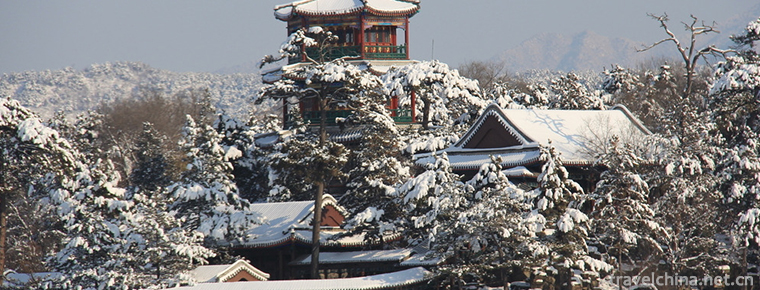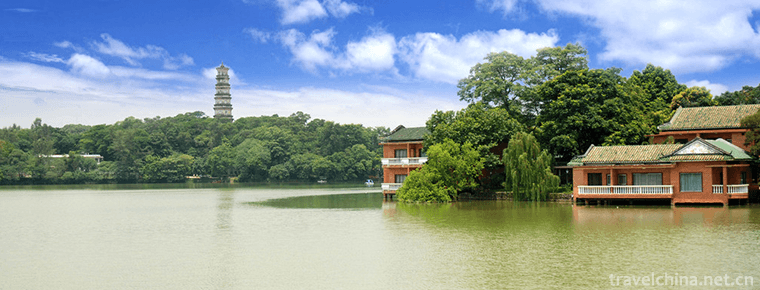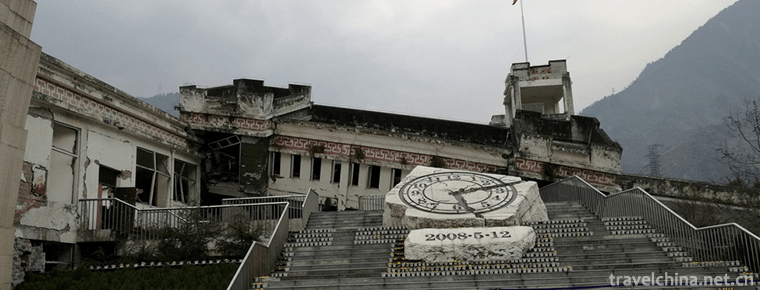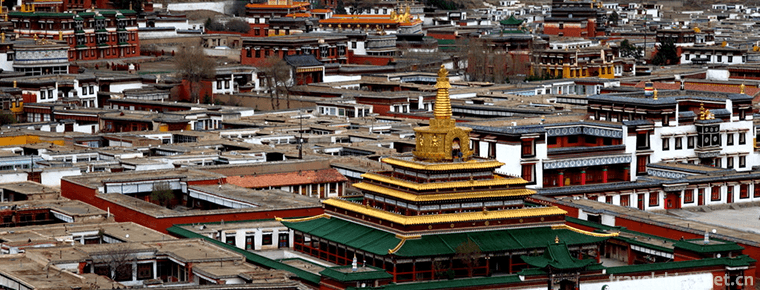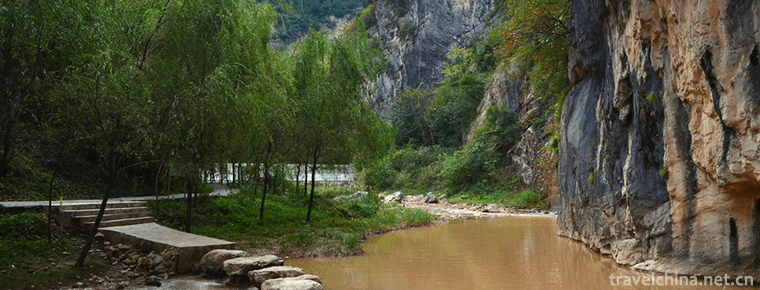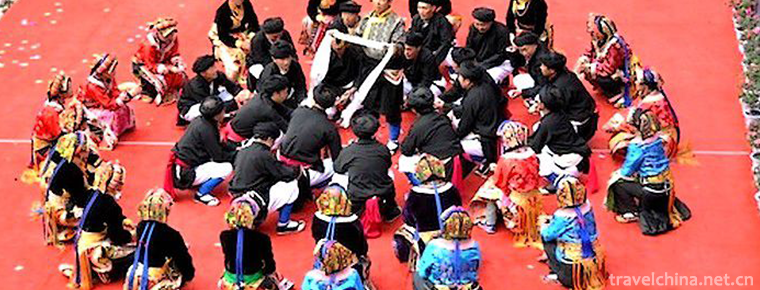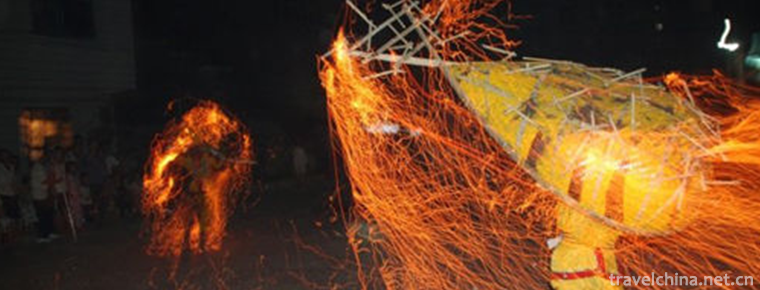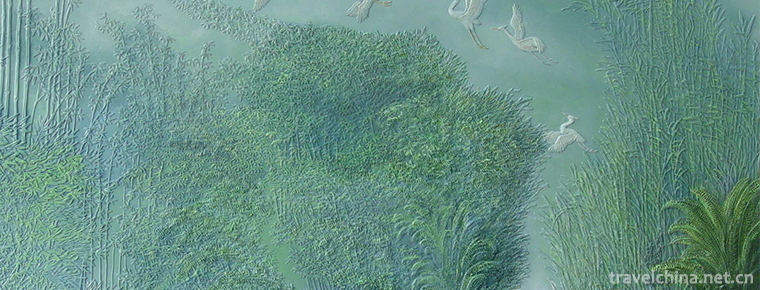Production Techniques of Gold Bricks in Suzhou Royal Kiln
Production Techniques of Gold Bricks in Suzhou Royal Kiln
Suzhou Royal Kiln Gold Brick Manufacturing Technology, Jiangsu Province, Suzhou traditional handicraft, one of the national intangible cultural heritage.
Royal kiln bricks production technology is complex, up to 20 processes, including the main processes of mud selection, mud drilling, billet making, kiln loading, firing, bass water, kiln out, grinding, etc., process, ring tightly.
On May 20, 2006, the technology of making gold bricks in Suzhou Royal Kiln was approved by the State Council of the People's Republic of China and listed in the first batch of national intangible cultural heritage list, item number_-32.
historical origin
During the Ming and Qing Dynasties, the burning of bricks must be carried out with the imperial decree of the emperor. From Yongle in Ming Dynasty to Guangxu in Qing Dynasty, the firing task of Royal kiln bricks was assigned by Ministry of Industry, supervised by local officials in Suzhou, and supervised by assistant officials (polishing and counselors) who were responsible for the construction. They were implemented to kiln households through local armor protection. Contracts were signed layer by layer. Generally, 60% deposit was paid in advance, and the rest were paid after acceptance and acceptance of the goods. During the Yongle period of Ming Dynasty, Zhu Di, the ancestor of Ming Dynasty, moved his capital to Beijing and built the Forbidden City with civil engineering. On the recommendation of the craftsmen of the Xiangshan Gang in Suzhou, Lumu Brick Kiln was favored by the Ministry of Works. Because of its excellent quality, it won the praise of Emperor Yongle and named the kiln as "Royal Kiln".
In 1912, the Republic of China established the Qing Dynasty to overthrow Emperor Xuantong and abdicated. This skill specially created for the royal family once dispersed among the people. It was almost interrupted in the ten years of the Cultural Revolution. The restoration of the brickmaking skills encountered some difficulties.
At the end of 1980's, the technology of making gold bricks in Suzhou imperial kiln developed rapidly. Beijing Palace Museum renovated Taihe Hall, Zhonghe Hall, Baohe Hall and other three halls, with 180,000 square meters of imperial kiln bricks on the inside and outside surface; Tiananmen in 2003 was renovated on a large scale, with 15,000 square meters of imperial kiln bricks; in the same year, the Temple of Heaven was renovated with royal kiln bricks; the main palace of the Palace was renovated with imperial kiln bricks designated.
Technological characteristics
It takes a long time to make bricks. It takes more than a year for a brick to go out of kiln from mud mining. After the kiln is out, it is sliced and polished into fine-grained bricks. Because of the stringent quality requirements, each brick has the names of supervisory officials and kiln households for inspection. It is precisely because of these unique features that the finished Royal Kiln bricks are simple and solid, with a light to be seen, flat as a daiyu, smooth as a black gold mirror. When struck, a clang sound similar to that of metal will be emitted, "No holes are broken, and there is sound when struck".
The process of making imperial kiln bricks is complex, up to 20 channels. There are no bubbles in the bricks and no fine cracks in the outside. The bricks made in Royal Kiln are exquisite and beautiful, smooth and wear-resistant, non-slippery and non-wet. Brick paving can resist thousands of trampling and damp rise. After months of drying in the shade, it is possible for this ordinary mud to turn into smooth gold bricks.
Technological process
The firing of "Royal Kiln Brick" has formed a complete and strict process flow and operation method. Its process is extremely complex, with more than 20 processes. Each process is tightly fastened. If one process is not reached, the previous work will be discarded. It usually takes 18 months to finish the process from soil selection and mud drilling, billet drying, kiln ignition, mild fire fumigation, extinguishing basketball water to kiln polishing.
1. Mud Selection
Royal kiln bricks "its soil must be taken from the dry yellow produced in the northeastern land Tomb of the city as gold and silver." The soil here is sticky, very delicate, and does not contain sand and impurities. But mud selection is still not a simple process. It is necessary to dig a hole to understand its soil structure and identify the quality of the soil before deciding whether to use or not. After selecting the mud, the raw soil (or mud) 3-4 meters deep from the surface is taken. This process is called "mud lifting" locally. After the mud is removed, it is piled up in the open pit for about half a year to let the wind, frost, rain and snow attack to promote its decomposition, commonly known as "frozen soil". Its purpose is to make the soil free of hard blocks, easy to turn over, fine and sticky, so as to make high-grade bricks.
2. Sludge drilling
After slicing the mud one by one, add water to the mud heap, and let cattle or people tread on the mud again and again, making the mud thick and greasy, and making the mud ripe, commonly known as "treading on yellow mud". Finally, the mud is dried thoroughly in the sunshine, and then it is made into fine powder by coarse, medium and fine grinding. Only when the sand and stone impurities are removed by sieve can the pure clay for brick making be obtained.
3. Billet Making
The process of billet making is very complicated and time-consuming. There is a popular saying that "the yellow mud on the scene is like a golden hill, and the debt of the yellow mud will not be paid off". Before billet making, water first, then chop the mud with a shovel and cover it with straw curtain. It is called mud sealing, commonly known as "mud stuffing". The next day, the straw curtain was stripped and then cut into piles, still covered with straw curtain. The billet can be made by repeatedly Chopping for 5 to 6 times until the clay is sticky like glutinous rice dumplings. When making billet, first of all, the drilled clay should be filled into the made bricks mould (commonly used Chinese fir, not easy to deform), commonly known as "bricklaying". "Tiangong Kaiwu" records as "building square brick, mud into square rectification, flat cover, two people stand on it, grinding and strong". To make bricks in the formwork, it is necessary to step on barefoot firmly and finish at one go, so as to ensure that there is no air hole in the mud in the frame. Then a bow made of wire is used to cut the blank surface and grind the board back and forth. Subsequently, the wooden frame is covered with a board larger than the wooden frame. The wooden frame is turned over. The upside-down side is ground flat with the wooden board, and the wooden frame can be unraveled until there are no fine cracks on the surface of the blank. When the bricks are made, they are lifted to the ventilated room by two people and placed vertically. When the mud in the upper part is hard, the mud in the lower part is turned over to the upper part. Turn over every few days, so that repeated 5 to 6 times, till the surface of the brick is hard and white, completely shady and dry, can be fired into the kiln.
IV. Kiln Loading
When burning "bricks", the environment of the kiln is very strict. Only the kiln core can be burned, so the large kiln must be used. Generally, each kiln can only hold about 100 bricks, not more than 300 bricks, according to certain methods and pay attention to stacking in the center of the kiln, in order to allow the flame to flow back in the kiln, so that each row of bricks are uniformly heated. In order to prevent water droplets from dripping directly onto the bricks and producing white spots and markings, the bricks should be surrounded by ordinary bricks and tiles close to the walls of the kiln.
5. Kiln Burning
This process is the most critical, slightly wrong, a kiln brick will be discarded. In order to ensure that the temperature in the kiln room is as consistent as possible, the height of Lutomb kiln is larger than the length, commonly known as "steamed bread kiln". Brick billet into kiln, need to "prevent sudden fire intense", to be fired with civilian fire, and require to keep abreast of kiln temperature changes, and kiln temperature control is entirely based on the experience of kiln burners. In the Ming Dynasty, the bricks had to be fumigated for one month with wheat firewood, dehydrated, and then burned for one month with a piece of firewood and for 40 days with pine firewood before they came out of the kiln. In the Qing Dynasty, the firing time was greatly shortened, requiring only 12 days for Maichaiwang to burn, but the requirements for kiln workers were more stringent. The kiln workers should observe the temperature at any time and remove ash and change wood in time. In kiln burning, the aim of changing fuel is to gradually increase the temperature in kiln. The purpose of burning bran grass is to make the water added into the brick gradually evaporate, and the temperature is about 110 C. After replacing with wood splitting, the temperature rises to 350-850 C, the minerals in the brick are decomposed, the carbon is oxidized and burned out, and the brick becomes a brittle product that no longer dissolves in water. This stage is called "oxidation period". Finally, it can produce high-temperature pine branches and so on, which melts the fusible particles in clay and injects them into the pore of the brick billet, so that the green body becomes dense, the volume shrinkage and the strength increase. This stage is called "sintering" and the temperature is above 900 C. When the bricks are sintered at high temperature, the kiln workers seal the top pore with mud to reduce the air entering the kiln. A large amount of free carbon in the flame penetrates through the pore of the bricks, and the temperature rises to about 1000 C until the reduction is completed.
6. Bass Water
Bass water is a unique process in brick making in China. Firstly, the fire pond and the top of the kiln are sealed with bricks, and then the water is discharged from the accumulated pond on the top of the kiln. The water in the pond must be kept in a certain amount and the water seepage must be kept at a certain speed. The bricks are easy to be brittle and the color of the bricks will turn yellow and red if they are speeded up. Therefore, the kiln workers need to continuously add water to the top pool, and master the speed of water release, so that the bricks in the kiln produce kiln change, from ochre to indigo. This process is very taboo leakage, otherwise the bricks will appear white spots, become inferior products, or even scrap the whole kiln.
7. Out of Kiln
Although water has been poured into the kiln for four or five days, the temperature in the kiln is still very high, and the dust is diffuse, very choking. The fired bricks are still hot and heavy when they leave the kiln. The kiln workers should not only carry them carefully and lightly, but also be prepared to prevent burns.
Grinding
The bricks removed from the kiln can only be regarded as semi-finished products, which need careful slicing and polishing to become fine bricks. The polishing of bricks is carried out in a circular flume. To flush while polishing, not only the surface of bricks should be polished smoothly, but also the effect of using longer and brighter. Some bricks can even be used as mirrors.
9. Bubble Oil
After polishing, the bricks should be soaked in tung oil one by one. Tung oil can not only make bricks shiny, but also extend their service life.
X. Inspection
The finished product of the bricks "or three, five, or dozens of choices, must be on all sides, pure white color, no drying lines, no falling angle, knocking sound shock and clear, is qualified". Anyone with dry lines, falling angle and not burnt through is not eligible. Qualified bricks must be sealed with a layer of soft wax, smoky black, and wrapped with straw rope before they can be put into storage.
Inheritance and Protection
Inheritance value
The gold bricks used in Suzhou Royal Kiln have high practical and ornamental value. The bricks used for paving the floor have the characteristics of smooth, wear-resistant, more polished, non-slippery and non-wet. It can not only prevent the rise of underground humidity, but also set off the palace more magnificent and comfortable. Royal kiln bricks "turn earth into gold" is the crystallization of Wu culture, which embodies the ingenuity and wisdom of Royal kiln people. It is a bright spot of Chinese brick kiln culture and contains rich cultural and historical connotations.
Current situation of inheritance
With the acceleration of modernization and urbanization, not only palace-style buildings have become history, but also classical folk hall buildings have gradually disappeared, giving way to high-rise buildings. The demand for bricks in the market is very small, which makes the production scale unable to expand. Burning bricks is a highly skilled and complex manual labor with long learning cycle, large labor input and low economic returns. Young people have no intention to step into it, and the whole industry has few successors. There is only one imperial kiln in Suzhou, and more than 20 craftsmen are making bricks. Therefore, it is urgent to take protective measures against the ancient folk craft of making bricks in Imperial kiln.
Heritage figures
Jinmeiquan, male, born in December 1949. In June 2007, Jinmeiquan was selected as the representative successor of the first batch of national intangible cultural heritage projects and declared in Xiamen, Fujian Province. Project Name: Production Techniques of Gold Bricks in Suzhou Royal Kiln.
protective measures
In order to protect the technology of making gold bricks in Imperial kiln, Lutomu Town maintains and protects the ancient kiln site in an all-round way. It also collects and arranges the representative gold bricks of different ages, stores them by number, and establishes a display room of gold bricks. The Royal Kiln Brick Factory has also recruited a successor of the Royal Kiln Brick Manufacturing Skills, so that they can master the basic skills of making bricks.
In March 2012, Xiangcheng Cultural and Sports Bureau and Suzhou University Social College jointly formed a research group, focusing on the historical origin of BRICK, excavating its connotation and expanding its extension, providing strong support for site protection and Museum construction. At the end of the same year, the research group completed all its tasks.
On May 18, 2016, the Royal Kiln Brick Museum officially opened in Suzhou. In July 2016, the first systematic introduction of the new book "Royal Kiln Bricks" was published. The book details the basic concepts, historical origins, technological processes, cultural connotations of the bricks, as well as the experience and understanding of the spirit of life extended from the "non-legacy" of the bricks.
social influence
Important Exhibitions
On November 19, 2013, the Cultural Exchange Exhibition of Royal Kiln Bricks in Suzhou, China was held in the exhibition hall of the City Hall of Port Alegre, Brazil. The production techniques of Royal Kiln Bricks in Suzhou were displayed in the exhibition.
On March 10, 2014, the national intangible cultural heritage of Suzhou Royal Kiln Brick Manufacturing Technology Jinjing Exhibition opened in Beijing Museum of Art. The production technology of Suzhou Royal Kiln Brick was first exhibited in Beijing (since 1911).
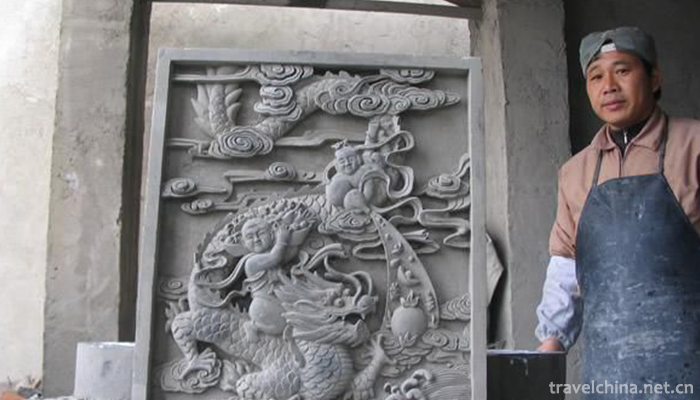
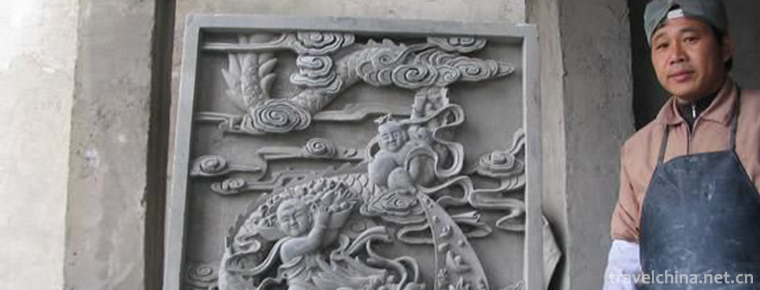
Production Techniques of Gold Bricks in Suzhou Royal Kiln
-
Chengde Summer Resort and its surrounding Temple scenic spot
Chengde Summer Resort and its surrounding Temple scenic spot, World Cultural Heritage, established in 1994. It is located in Chengde City, Hebei Province
Views: 212 Time 2018-11-24 -
Huizhou West Lake Scenic Spot
Huizhou West Lake scenic area is located in the central area of Huicheng in Guangdong Province, Southeast of Huizhou City, consisting of West Lake and the Red Lake, a total area of 20.91 square kilome
Views: 132 Time 2018-12-12 -
Wenchuan Special Tourist Area
Wenchuan Special Tourist Area is a memorial and cultural theme scenic area specially developed after the reconstruction of the Wenchuan Earthquake on May 12, 2008
Views: 226 Time 2018-12-12 -
Gudong Waterfall
Gudong Forest Waterfall Group Tourist Area is located at the foot of Butterfly Mountain - Lawn Road, Gudong Village, Dayuan Town, 8 kilometers away from Guilin City, on the other side of Lijiang Forei
Views: 246 Time 2019-01-12 -
La blun Temple
Labrang Temple is one of the six main monasteries of the Gelug Sect of Tibetan Buddhism. In 1982, Labrang Temple was listed as one of the key cultural relics protection units in China
Views: 178 Time 2019-01-29 -
Xigaosong Scenic Spot
Xiqiaosong Scenic Area is located at the foot of Tianjing Mountain, 13 kilometers west of Chengxian County, in the middle of Yuqiaoxia, a national AAAA-level tourist attraction
Views: 207 Time 2019-02-25 -
Bo Ba Shen en
Bobassengen is a unique folk large-scale narrative mass pot village dance created by Ganbao Tibetan Village in Jiarong Tibetan area, Lixian County, Sichuan Province. "Boba"
Views: 411 Time 2019-04-04 -
Fire tiger
Fire tiger is a traditional folk dance form spread in Fengtai, Anhui Province. One of its greatest characteristics is the word "fire". Performers often wear tight, thick clothes and tie tige
Views: 163 Time 2019-05-05 -
Ou sculpture
Ou sculpture, commonly known as color oil-pickle sculpture, also known as "color relief", is a unique folk art in Wenzhou, Zhejiang Province, one of the local traditional arts and crafts. It
Views: 184 Time 2019-06-08 -
Shangdang Laozi
Shangdang Laozi is one of Shanxi local operas. It is a kind of opera popular in southeastern Shanxi. Shangdang Laozi is a tributary of Wu'an Laozi in Hebei Province. During the Daoguang period of the
Views: 391 Time 2019-06-13 -
Donghekou earthquake site park
Donghekou earthquake site park, located in Qingchuan County, Guangyuan City, Sichuan Province, is the first earthquake site protection memorial site of Wenchuan earthquake. On November 12, 2008, the opening ceremony and the launching ceremony of the tourism market after the earthquake were held.
Views: 260 Time 2020-11-08 -
Guangyuan tertiary industry
In 2018, the total social fixed asset investment in Guangyuan was 67.221 billion yuan, an increase of 14.1% in the same caliber. Among them, investment in fixed assets was 64.721 billion yuan, an increase of 16.4%.
Views: 329 Time 2020-12-15
